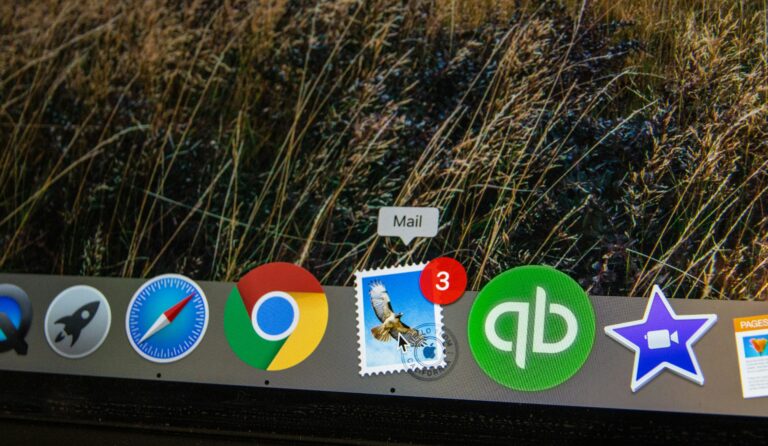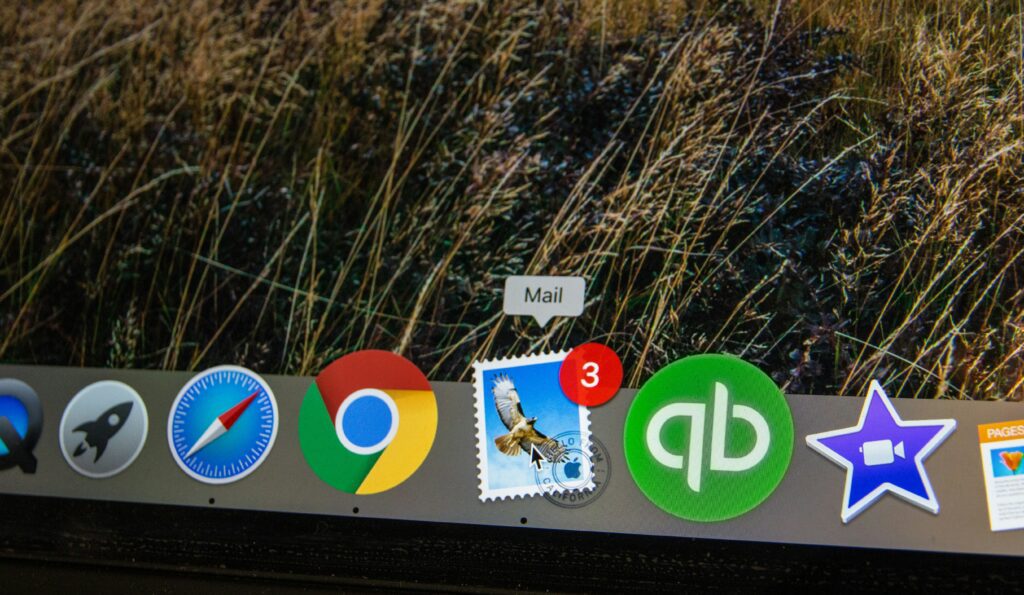
Imagine being able to send personalized and targeted emails to your customers, tailored specifically to their interests and preferences. With email segmentation, this is not only possible, but highly effective in driving engagement and boosting sales. By dividing your email list into different segments based on demographics, behavior, or interests, you can deliver relevant content that resonates with each individual recipient. In this article, we will explore the immense potential of email segmentation in marketing, and how it can transform your email campaigns into powerful tools for reaching and connecting with your audience. Get ready to harness the full power of email segmentation and take your marketing efforts to new heights.
Affiliate Marketing Academy – Get it here
What is Email Segmentation?
Email segmentation is the practice of dividing your email subscriber list into smaller, more targeted groups based on specific criteria. Instead of sending one generic email to your entire subscriber list, you can tailor your content and messaging to be more relevant and personalized to each segment. By understanding the unique characteristics and preferences of your subscribers, you can send them emails that resonate with their needs and interests.
Definition of Email Segmentation
Email segmentation is the process of categorizing your email subscribers into distinct segments based on various factors such as demographics, geography, behavior, transactions, and psychographics. This allows marketers to send personalized and targeted emails to different segments, increasing the chances of engagement, conversions, and customer satisfaction.
Importance of Email Segmentation
Email segmentation plays a pivotal role in modern marketing strategies. It enables you to deliver highly relevant and personalized content to your subscribers, leading to better engagement and overall campaign success. By tailoring your emails to specific segments, you can enhance customer satisfaction, maximize conversions, and build long-term relationships with your audience.
Benefits of Email Segmentation
Increased Open Rates
When you segment your email list, you can create subject lines and content that directly appeal to the interests and needs of each segment. This personalization leads to higher open rates, as recipients are more likely to engage with an email that addresses their specific concerns rather than a generic message.
Higher Click-through Rates
Email segmentation allows you to send targeted content and offers to specific segments, increasing the relevance and value of your emails. As a result, your click-through rates are likely to improve, as subscribers are more likely to click on links that align with their interests, leading to increased website traffic and potential conversions.
Improved Conversion Rates
Sending personalized emails to segmented groups increases the likelihood of conversions. By tailoring your messages to specific segments, you can address their pain points, provide relevant solutions, and offer customized incentives that resonate with their needs. This results in higher conversion rates and more successful marketing campaigns.
Enhanced Customer Engagement
Email segmentation helps you establish a deeper connection with your audience by delivering content that specifically caters to their preferences. By segmenting based on factors like past purchases, browsing behavior, or engagement level, you can send highly targeted emails that capture their attention and encourage interaction, fostering a sense of engagement and loyalty.
Reduced Unsubscribe Rates
One of the key benefits of email segmentation is the reduction in unsubscribe rates. When subscribers receive emails that are highly relevant and personalized, they are less likely to unsubscribe from your mailing list. By segmenting your audience and delivering content tailored to their interests and needs, you can maintain their engagement and reduce the risk of losing valuable subscribers.

Affiliate Marketing Academy – Check it out
Types of Email Segmentation
Demographic Segmentation
Demographic segmentation involves dividing your email subscribers based on demographic factors such as age, gender, income, occupation, and education. This segmentation allows you to target specific groups with content and offers that are most likely to resonate with them, increasing the chances of engagement and conversions.
Geographic Segmentation
Geographic segmentation categorizes your subscribers based on their physical location, such as country, state, city, or zip code. This type of segmentation enables you to deliver location-specific content, promotions, and events, ensuring that your emails are relevant and tailored to the geographical preferences and needs of your subscribers.
Behavioral Segmentation
Behavioral segmentation involves categorizing your subscribers based on their past interactions with your brand, such as website visits, purchases, clicks, or content consumption. By understanding their behavior, you can create targeted emails that cater to their specific interests, purchase history, or browsing patterns, increasing the chances of engagement and conversions.
Transactional Segmentation
Transactional segmentation focuses on segmenting your subscribers based on their past transactional activities, such as recent purchases, abandoned carts, or product/service usage. By targeting individuals who have already shown a clear interest in your offerings, you can send them emails that encourage them to complete their purchase, cross-sell related products, or provide relevant post-purchase support.
Psychographic Segmentation
Psychographic segmentation categorizes your subscribers based on their personality traits, values, beliefs, interests, and lifestyles. By understanding their psychographics, you can create emails that resonate with their motivations, aspirations, and preferences, nurturing a deeper emotional connection and driving higher engagement.
Best Practices for Email Segmentation
Collecting Relevant Data
To effectively segment your email list, it’s crucial to collect relevant data from your subscribers. This can be done through sign-up forms, surveys, preference centers, tracking pixels, or integrating your email marketing platform with other data sources. The more information you gather, the better you can segment and tailor your emails to specific audience segments.
Defining Segmentation Criteria
Before segmenting your email list, it’s essential to define clear segmentation criteria based on your marketing objectives and the available data. This could include factors such as age range, purchase history, browsing behavior, or engagement level. By clearly defining your segmentation criteria, you can ensure that your segments are meaningful and aligned with your overall marketing strategy.
Creating Personalized Content
Once you have segmented your email list, it’s essential to craft personalized content for each segment. This includes customizing the subject lines, email copy, and offers to align with the specific needs, interests, and preferences of each segment. By creating highly relevant and tailored content, you can increase engagement and conversions among your subscribers.
Testing and Monitoring
To optimize your email segmentation strategy, it’s crucial to continuously test and monitor the performance of your segmented campaigns. A/B testing different email variations, measuring key metrics such as open rates, click-through rates, and conversions, and analyzing customer feedback will help you refine your segmentation approach and maximize the effectiveness of your campaigns.

Effective Email Segmentation Strategies
Segmenting by Purchase History
Segmenting your subscribers based on their purchase history allows you to send targeted emails that align with their buying behavior. You can create segments for new customers, frequent buyers, or those who have made specific types of purchases. By tailoring your emails to their purchase patterns, you can provide personalized recommendations, exclusive offers, or relevant product updates, maximizing the chances of conversions and future purchases.
Segmenting by Engagement Level
Segmenting your subscribers based on their engagement level enables you to focus on those who are most active and interested in your brand. You can create segments for highly engaged subscribers who regularly open, click, and interact with your emails, as well as segments for those who are less engaged. By sending targeted re-engagement campaigns to inactive subscribers or exclusive content to highly engaged ones, you can foster stronger relationships, increase brand loyalty, and improve overall campaign performance.
Segmenting by Demographics
Demographic segmentation allows you to target specific groups based on factors such as age, gender, income, or occupation. This type of segmentation helps you tailor your emails to the unique needs, preferences, and characteristics of each demographic segment. For example, you can create segments for millennials, baby boomers, or working professionals, ensuring that your content and offers resonate with their specific demographic profiles.
Segmenting by Geographic Location
Segmenting your subscribers based on their geographic location enables you to deliver location-specific content, promotions, or events. By creating segments for different regions or cities, you can provide localized information, offers, or even invitations to local events or store openings. This level of personalization enhances the relevance and value of your emails, increasing the chances of engagement and conversions.
Tools and Platforms for Email Segmentation
Email Service Providers
Most email service providers (ESPs) offer robust segmentation capabilities built into their platforms. These ESPs allow you to create and manage multiple segments based on various criteria, ensuring that you can effectively target specific groups with the right content. Some popular email service providers that offer advanced segmentation features include Mailchimp, Campaign Monitor, and Constant Contact.
Customer Relationship Management (CRM) Software
CRM software is another powerful tool for email segmentation as it provides a comprehensive view of your customer data. By integrating your CRM system with your email marketing platform, you can leverage detailed customer profiles, transaction history, and communication logs to segment your subscribers more effectively. Popular CRM software options that offer segmentation capabilities include Salesforce, HubSpot, and Zoho CRM.
Marketing Automation Platforms
Marketing automation platforms offer advanced segmentation capabilities that allow you to create dynamic segments based on real-time data and user behavior. These platforms often include features such as lead scoring, behavioral tracking, and automated workflows, enabling you to deliver highly targeted messages at the right time to the right audience. Popular marketing automation platforms that excel in email segmentation include Marketo, Eloqua, and Pardot.

Common Challenges in Email Segmentation
Data Quality and Accuracy
One of the main challenges in email segmentation is ensuring the quality and accuracy of your data. Outdated or incorrect information can lead to ineffective segmentation and irrelevant messaging, resulting in decreased engagement and conversions. Regularly auditing and updating your data sources, implementing data validation processes, and maintaining a clean database are essential for successful segmentation efforts.
Integration Issues
Integrating different systems and platforms to gather and consolidate data for segmentation can be a complex process. Ensuring seamless integration between your email marketing platform, CRM software, and other data sources requires technical expertise and coordination. It’s crucial to work closely with your IT team or external consultants to overcome integration challenges and ensure a smooth flow of data for effective segmentation.
Lack of Resources or Expertise
Implementing a successful email segmentation strategy requires both resources and expertise. Small businesses or marketing teams with limited resources may struggle to invest in the necessary tools, technology, or human resources to implement effective segmentation. Training or hiring skilled professionals or outsourcing to agencies that specialize in email segmentation can help overcome these challenges and maximize the benefits of segmentation.
Maintaining Privacy and Compliance
With increasing emphasis on data privacy regulations such as GDPR and CCPA, ensuring compliance when collecting, storing, and using customer data for segmentation is crucial. Maintaining privacy policies, obtaining proper consent, and implementing robust security measures are essential to establish trust and protect your subscribers’ personal information. Staying updated on privacy regulations and industry best practices is key to successfully navigating this challenge.
Case Studies: Successful Email Segmentation Campaigns
Company A: Increased Sales through Behavioral Segmentation
Company A, an ecommerce retailer, implemented behavioral segmentation to boost sales. By tracking customers’ browsing and purchase history, they created segments based on product categories and customer preferences. They sent personalized emails with tailored product recommendations and exclusive offers, resulting in a 25% increase in overall sales and a 45% increase in repeat purchases.
Company B: Improved Customer Loyalty with Demographic Segmentation
Company B, a clothing brand, used demographic segmentation to enhance customer loyalty. They segmented their subscribers based on age, gender, and preferred clothing styles. By sending targeted emails with exclusive discounts, curated collections, and personalized style tips, they saw a 30% increase in customer retention and a 20% increase in customer satisfaction.
Company C: Enhanced Customer Engagement via Transactional Segmentation
Company C, a software provider, leveraged transactional segmentation to improve customer engagement. By segmenting their subscribers based on recent product usage and support inquiries, they sent targeted emails with relevant tutorials, tips, and updates. Consequently, they achieved a 40% increase in feature adoption, a 25% decrease in support requests, and a significant improvement in customer satisfaction ratings.
Future Trends in Email Segmentation
Artificial Intelligence and Machine Learning
Artificial intelligence (AI) and machine learning (ML) are expected to play significant roles in the future of email segmentation. These technologies can analyze vast amounts of data in real-time, identify patterns, and automate the segmentation process. By harnessing AI and ML, marketers will be able to deliver even more personalized and relevant content to their subscribers, driving higher engagement and conversions.
Hyper-Personalization
Hyper-personalization takes email segmentation to the next level by delivering individualized content tailored to each subscriber’s specific preferences, behavior, and context. This trend involves advanced data analytics, real-time customer insights, and dynamic content generation. By hyper-personalizing emails, marketers can create unique experiences that resonate deeply with each recipient, fostering stronger customer relationships and driving exceptional campaign performance.
Real-Time Segmentation
Real-time segmentation allows marketers to capture and analyze customer data as it happens, enabling immediate and highly relevant email campaigns. By leveraging real-time behavioral data, marketers can send timely and personalized emails triggered by specific user actions or events. This trend will continue to evolve, enabling marketers to engage with their subscribers at the precise moment they are most likely to convert or engage.
In conclusion, email segmentation is a powerful tool in marketing that allows you to deliver personalized and targeted emails to specific audience segments. By understanding the unique characteristics and preferences of your subscribers, you can effectively engage them, increase conversions, and build long-term relationships. With the potential for increased open rates, higher click-through rates, improved conversion rates, enhanced customer engagement, and reduced unsubscribe rates, email segmentation should be an integral part of any comprehensive marketing strategy. By following best practices, leveraging effective segmentation strategies, utilizing the right tools and platforms, and staying ahead of future trends, you can unlock the full potential of email segmentation and drive the success of your marketing campaigns.